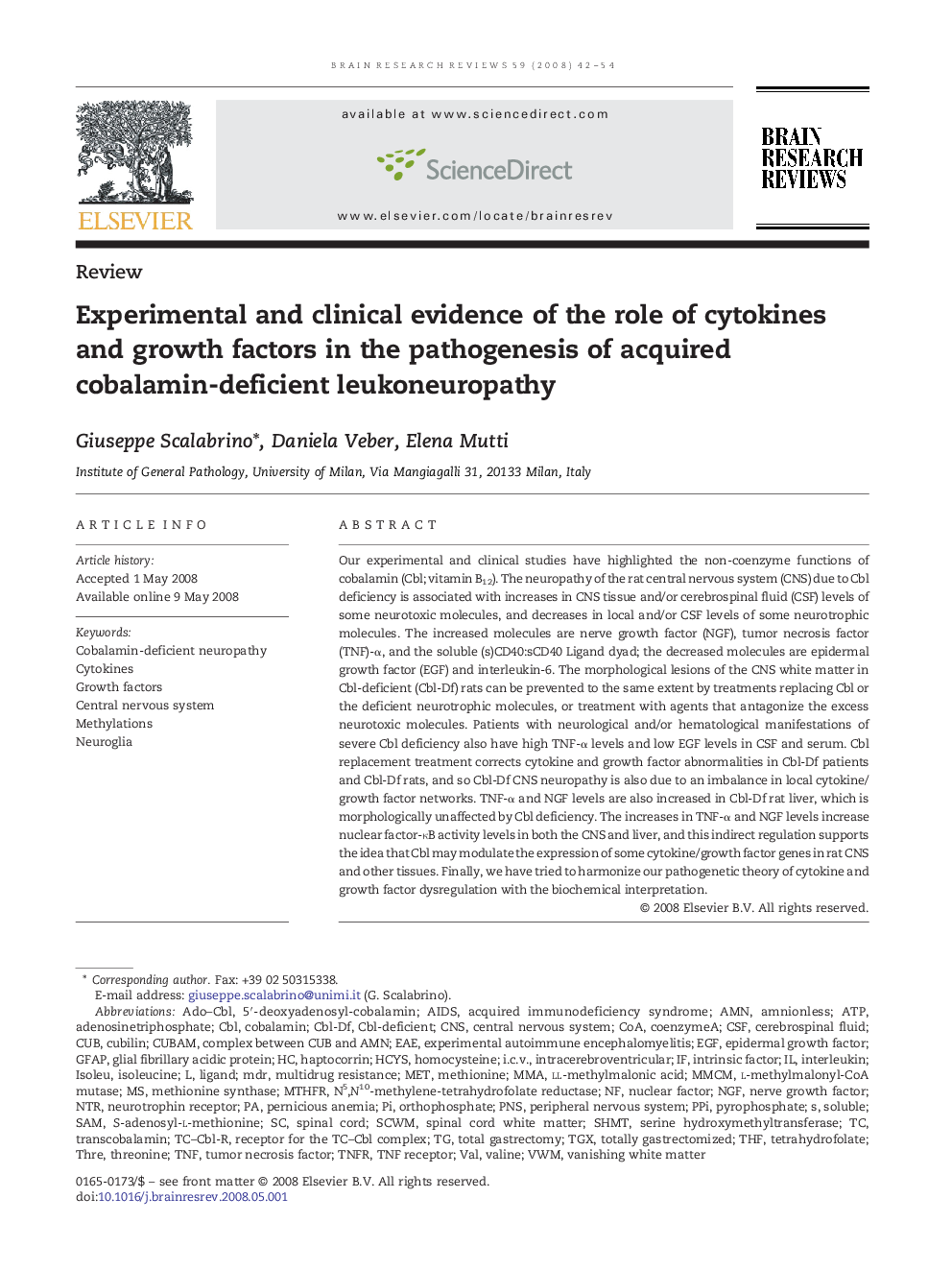| Article ID | Journal | Published Year | Pages | File Type |
|---|---|---|---|---|
| 4333787 | Brain Research Reviews | 2008 | 13 Pages |
Our experimental and clinical studies have highlighted the non-coenzyme functions of cobalamin (Cbl; vitamin B12). The neuropathy of the rat central nervous system (CNS) due to Cbl deficiency is associated with increases in CNS tissue and/or cerebrospinal fluid (CSF) levels of some neurotoxic molecules, and decreases in local and/or CSF levels of some neurotrophic molecules. The increased molecules are nerve growth factor (NGF), tumor necrosis factor (TNF)-α, and the soluble (s)CD40:sCD40 Ligand dyad; the decreased molecules are epidermal growth factor (EGF) and interleukin-6. The morphological lesions of the CNS white matter in Cbl-deficient (Cbl-Df) rats can be prevented to the same extent by treatments replacing Cbl or the deficient neurotrophic molecules, or treatment with agents that antagonize the excess neurotoxic molecules. Patients with neurological and/or hematological manifestations of severe Cbl deficiency also have high TNF-α levels and low EGF levels in CSF and serum. Cbl replacement treatment corrects cytokine and growth factor abnormalities in Cbl-Df patients and Cbl-Df rats, and so Cbl-Df CNS neuropathy is also due to an imbalance in local cytokine/growth factor networks. TNF-α and NGF levels are also increased in Cbl-Df rat liver, which is morphologically unaffected by Cbl deficiency. The increases in TNF-α and NGF levels increase nuclear factor-κB activity levels in both the CNS and liver, and this indirect regulation supports the idea that Cbl may modulate the expression of some cytokine/growth factor genes in rat CNS and other tissues. Finally, we have tried to harmonize our pathogenetic theory of cytokine and growth factor dysregulation with the biochemical interpretation.
